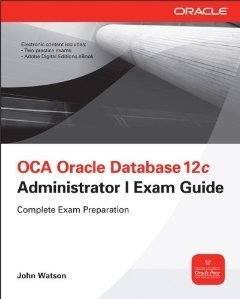|
This course provides a hands-on exposition of the Oracle Recovery Manager (RMAN) utility for backup and recovery of Oracle databases and additional capabilities. The course provides in-depth coverage of RMAN, for all releases: the current release is used for exercises and demonstrations, and the content back-ported as necessary for previous releases. This course is designed for database administrators, though IT Management will also find the content valuable for planning and infrastructure design purposes. As with all SkillBuilders courses, this class is highly customizable to your specific training requirements. Technical RequirementsNothing is required for labs (workshops). SkillBuilders will provide everything you need for all hands-on labs. Modest PC or Mac specs are required to connect to the online class. Detailed specs can be found here. Also, we strongly recommend using two monitors for this class. Student Comments – “The instructor’s willingness to work with us and our many questions surrounding how RMAN works with our new backup product – Actifio. He was phenomenal!” “John [Watson], the instructor, is excellent!” Click on the REVIEWS tab above to see many more student comments. |
Course Features
- Lectures 0
- Quizzes 0
- Duration 5 Half Days (~20 hours)
- Skill level All levels
- Language English
- Students 67
- Assessments Yes
Introduction to Recovery Manager
- Problems that need to be addressed
- Oracle technologies related to high availability and zero data loss
- Instance failure and recovery
Configure the database for recoverability
- File multiplexing
- Managing the redo log
- Using FRA and OMF
- Enable flashback
- Use of Data Pump
Recovery Manager Achitecture
- The various RMAN components
- Controlfile and catalog repositories
- Connection syntax
Simple Backup and Recovery
- Backup datafiles and archive logfiles
- Complete and incomplete recovery
- Configure default settings
Some Advanced Capabilities
- Backup Sets and image copies
- Incremental backups and incrementally updated copies
- Block change tracking
- Encryption and compression
- Incomplete recovery scenarios
Considerations for Multitenant
- Backup, restore, recovery, and flashback of PDBs
- PDB duplication, cloning, and refreshable clones
- Multitenant and Data Guard
Recovering from Block Corruption
- Detecting corrupted blocks
- Use of DBMS_REPAIR
- RMAN block recovery
Channels and Tape Devices
- Media management layer architecture
- Oracle Secure Backup
- Tape channel configuration
Maintenance, Reporting, and Tuning
- Retention policies
- Archive logfile management
- Repository updates
- Some performance considerations
Driving RMAN with scripts
- Stored scripts
- Operating system scripts
- Oracle’s “recommended” backup strategy
Flashback Technologies
- Flashback query in its various forms
- Flashback drop
- Flashback Data Archive
- Flashback database
- The Log Miner
Use of Auxiliary Databases
- Database duplication
- Tablespace and table point in time recovery
Workshop
- Configure the database for recoverability in all circumstances
- Diagnose problems
- Use the Recovery Advisor
- Simulate various scenarios, such as:
- Loss of tempfile(s)
- Loss of a datafile that has not been backed up
- Loss of one member of a multiplexed online logfile group
- Loss of the current online logfile group
- Loss of one copy of a multiplexed controlfile
- Loss of all copies of the controlfile
- Loss of a critical (system or undo) datafile
- Loss of a non-critical datafile
- Loss of a read-only datafile
- Loss of a datafile and an archive logfile
- Loss of the spfile
- Loss of a file system containing one or more datafiles, online logfiles, controlfile copies
- A corrupted block in a datafile
- Dropping a table
- Truncating a table
- Committing inappropriate DML
- Damage to the recovery catalog



